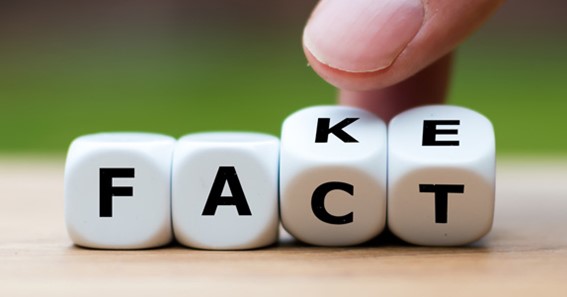Are you curious to know what is a false narrative? You have come to the right place as I am going to tell you everything about a false narrative in a very simple explanation. Without further discussion let’s begin to know what is a false narrative?
In today’s interconnected world, narratives play a significant role in shaping our understanding of events, people, and ideas. They have the power to inform, persuade, and even manipulate. However, not all narratives are based on truth and accuracy. Some narratives are intentionally constructed to mislead, distort, or advance specific agendas. These deceptive narratives are commonly referred to as false narratives. In this article, we will explore the concept of a false narrative, how it can be created, and the potential dangers it poses to individuals, society, and the quest for truth.
What Is A False Narrative?
A false narrative is a deliberately constructed or misleading storyline that distorts facts, omits crucial information, or presents a biased perspective to shape public opinion or promote a particular agenda. False narratives can be found in various domains, including politics, media, advertising, and social discourse. They aim to manipulate perceptions, influence behavior, and shape the narrative landscape in a way that aligns with the interests of the individuals or groups behind them.
Characteristics Of A False Narrative:
- Misinformation or Misrepresentation: False narratives often rely on misinformation or misrepresentation of facts. They may selectively present information that supports their desired narrative while ignoring or suppressing contradictory evidence.
- Emotional Appeal: False narratives frequently employ emotional tactics to resonate with the audience. They may evoke fear, anger, or sympathy, aiming to elicit an emotional response that can cloud critical thinking and rational judgment.
- Confirmation Bias: False narratives thrive on confirmation bias, the tendency for individuals to seek and interpret information that confirms their pre-existing beliefs or biases. By capitalizing on existing beliefs or prejudices, false narratives gain traction and reinforce confirmation bias within their target audience.
- Echo Chambers: False narratives often find fertile ground in echo chambers, where like-minded individuals and groups reinforce and amplify their shared beliefs. In these environments, dissenting views and contradictory evidence are dismissed or discredited, further entrenching the false narrative.
The Dangers Of False Narratives:
- Manipulation and Deception: False narratives manipulate public opinion by distorting reality, spreading misinformation, and deceiving people into believing a false version of events. This manipulation erodes trust and undermines the search for truth.
- Polarization and Divisiveness: False narratives can deepen societal divisions by pitting groups against each other, exploiting existing tensions, and fueling conflict. They contribute to the fragmentation of societies, hindering cooperation and understanding.
- Erosion of Democracy: In democratic societies, false narratives pose a threat to the functioning of democratic processes. They can influence elections, manipulate public discourse, and undermine the integrity of democratic institutions.
- Impaired Decision-Making: False narratives cloud judgment and impair critical thinking, leading to flawed decision-making. Individuals influenced by false narratives may make choices based on distorted information, leading to detrimental consequences for themselves and society as a whole.
Combatting False Narratives:
- Critical Thinking: Developing critical thinking skills is essential in navigating the landscape of narratives. Analyze information critically, question sources, and seek diverse perspectives to counter the influence of false narratives.
- Media Literacy: Promote media literacy by educating individuals on how to evaluate and verify information. Teach the skills necessary to distinguish between reliable sources and misinformation.
- Fact-Checking and Verification: Fact-checking organizations and independent journalists play a crucial role in debunking false narratives. Support and rely on reputable fact-checking sources to verify claims and challenge misinformation.
- Promote Open Dialogue: Encourage open and respectful dialogue that allows for the exchange of ideas and perspectives. Foster an environment where diverse voices are heard, and constructive discussions can take place.
Conclusion:
False narratives have the power to shape our perception of reality, influence behavior, and undermine the pursuit of truth. By understanding the characteristics and dangers of false narratives, we can become more discerning consumers of information and actively work towards a society grounded in critical thinking, open dialogue, and the pursuit of verifiable facts. Let us remain vigilant and resilient in the face of false narratives, striving for a more informed and cohesive world.
To Find Out About Such Things Follow On AndActivate
FAQ
What Is The Meaning Of A False Narrative?
Learn: What is a False Narrative? A false narrative is a commonly held belief that is based on incorrect or incomplete information. Often, false narratives refer to incorrect knowledge passed throughout a community or society.
What Are Examples Of False Narratives?
Some dishonest narrative lines deliberately cast doubt on someone’s motives for taking a particular position. An example would be denigrating a reporter or maligning an immigrant aid organization. This tactic doesn’t so much shoot the messengers of unwelcome truths as assassinate their characters.
How Do You Create A False Narrative?
False narratives may be created with the intent to deceive by limiting the number of narrative elements provided so that the observer completes the bulk of the narrative themselves, thereby taking ownership of the narrative by personalizing it.
Can Narrative Writing Be Fake?
In addition, a narrative can be factual or fictional. A factual story is one that is based on, and tries to be faithful to, actual events as they unfolded in real life. A fictional story is a made-up, or imagined, story; the writer of a fictional story can create characters and events as he or she sees fit.
I Have Covered All The Following Queries And Topics In The Above Article
What Is A False Narrative Definition
What Is A False Flag Narrative
What Is A “False Narrative”
What Is A “False Narrative”?
What Is A False Narrative?
What Is A False Narrative In Film
What Is A “False Narrative
What Is A False Narrative
Why do I create false narratives
What is a false narrative?
